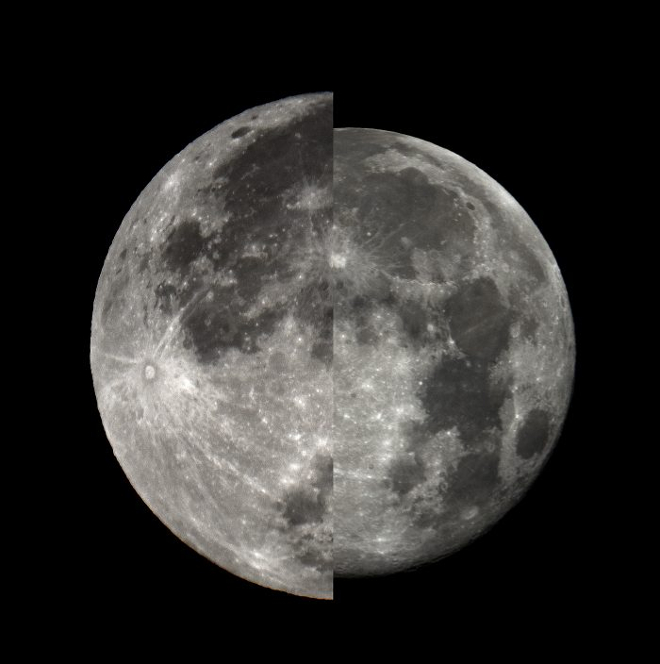|
Watch for 2017's first and last supermoon |
|
December 1, 2017 |
 |
| Eliot
Herman in Tucson, Arizona compared the
apparent size of 2017’s smallest full
moon in June with the November 2016
supermoon. He wrote: “Both images
captured with a Questar telescope and a
Nikon D800 camera. The images were
combined with Photoshop.” |
|
By Deborah Byrd
EarthSky.org
This month's full moon happens at the same instant worldwide
on December 3 at 15:47 UTC, which is 7:47 a.m.
Pacific Time. It’ll be 2017’s first, last and
only supermoon. And it's the first of three full
moon supermoons in succession -- of which one
will be both a blue moon and an eclipse!
In other words, this full moon will be near
perigee, or the closest point of the moon in
orbit for this month. Your eye probably can’t
detect a difference in size between the December
3 supermoon and any ordinary full moon, although
experienced observers say they can detect a size
difference. But the supermoon is substantially
brighter than an ordinary full moon.
Like every full moon, this one is opposite the
sun from Earth.
It’ll rise in the east as the sun sets in the
west, ascend to its highest point in the sky in
the middle of the night, and set in the west
around dawn. Clouded out on December 3? The
Virtual Telescope Project in Rome is offering an
online viewing of the supermoon.
The December 2017 supermoon will be the first of
three full moon supermoons in succession. The
two full moons in January 2018 – on January 2
and 31 – also count as supermoons.
Some people will call the full moon on January
31 a blue moon because it’ll be the second of
two full moons in one calendar month.
Moreover, the January 31, 2018 supermoon will
stage a total eclipse of the moon; if you live
in North America or the Hawaiian Islands, this
lunar eclipse will be visible in during the
morning hours before sunrise on January 31.
On the other hand, if you live in the Middle
East, Asia, Indonesia, Australia or New Zealand,
this lunar eclipse will happen in the evening
hours after sunset on January 31. |
|
Questions or comments about this
article?
Click here to e-mail! |
|
|
|
|

